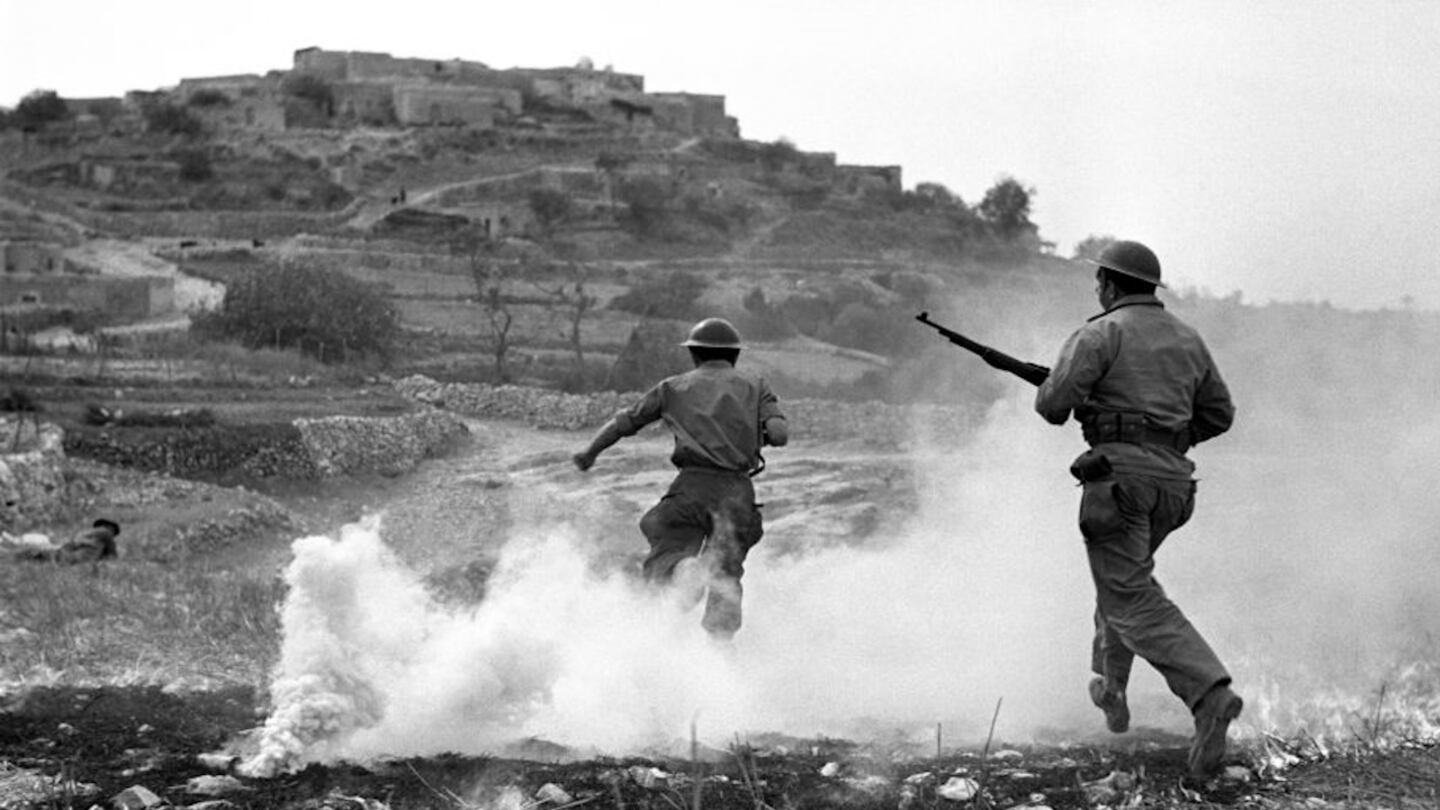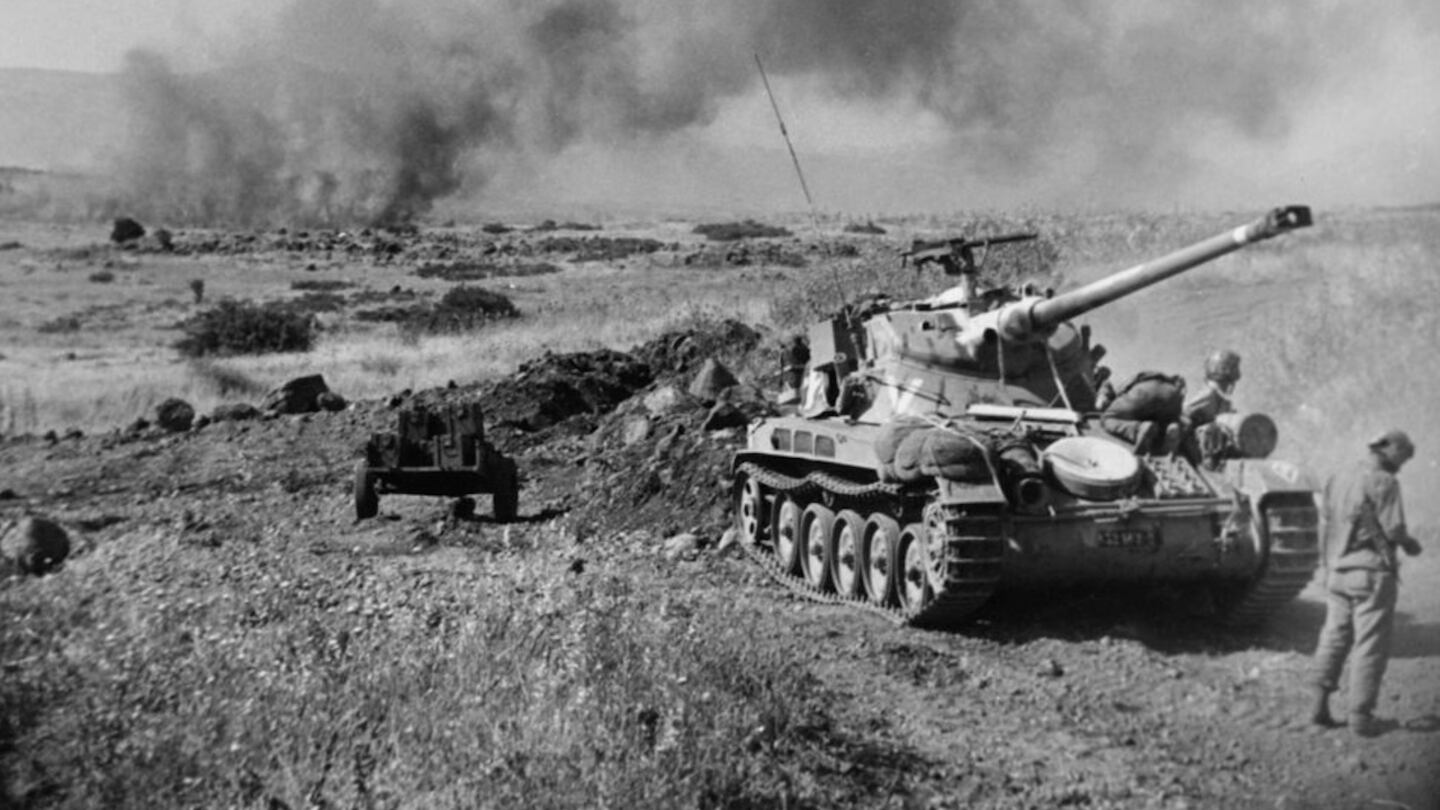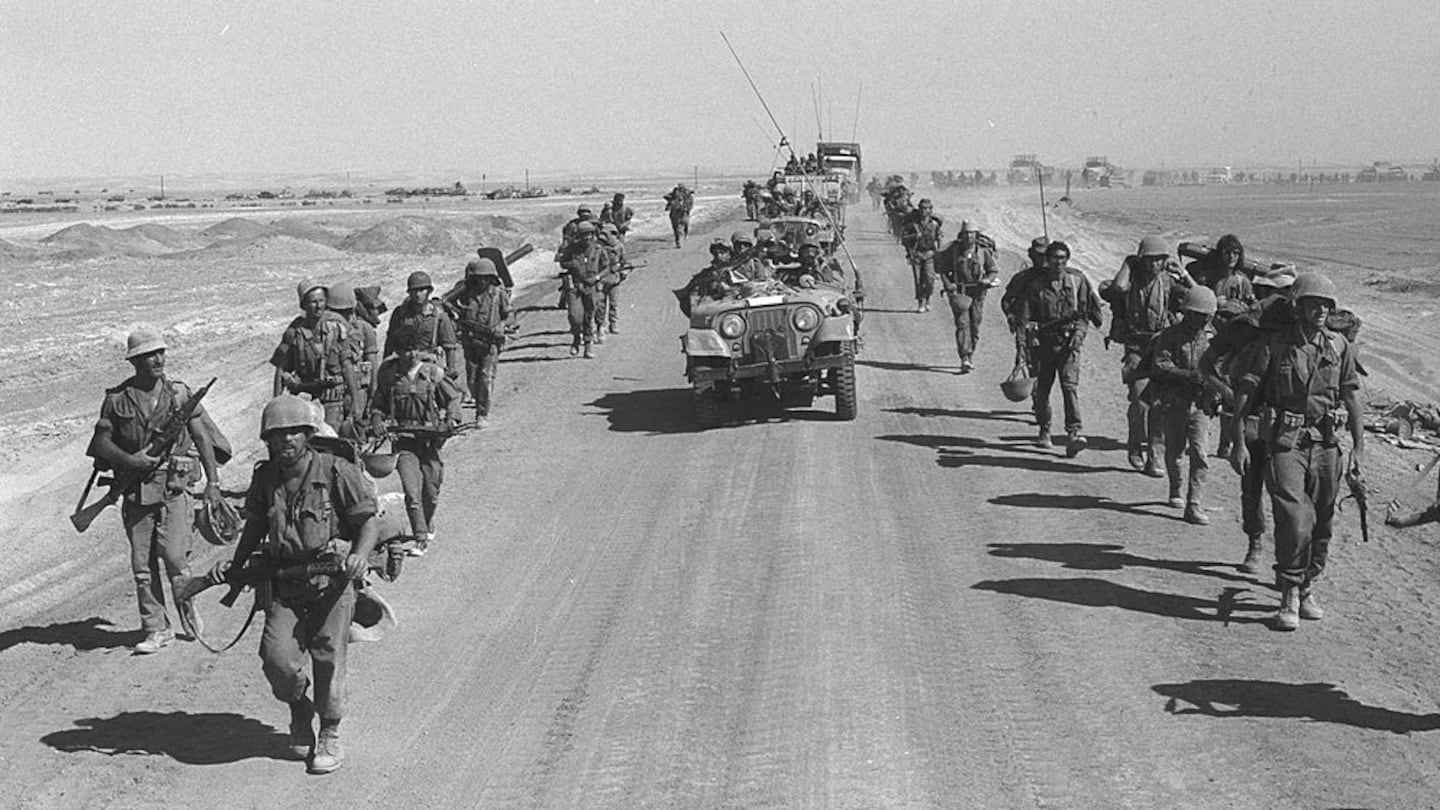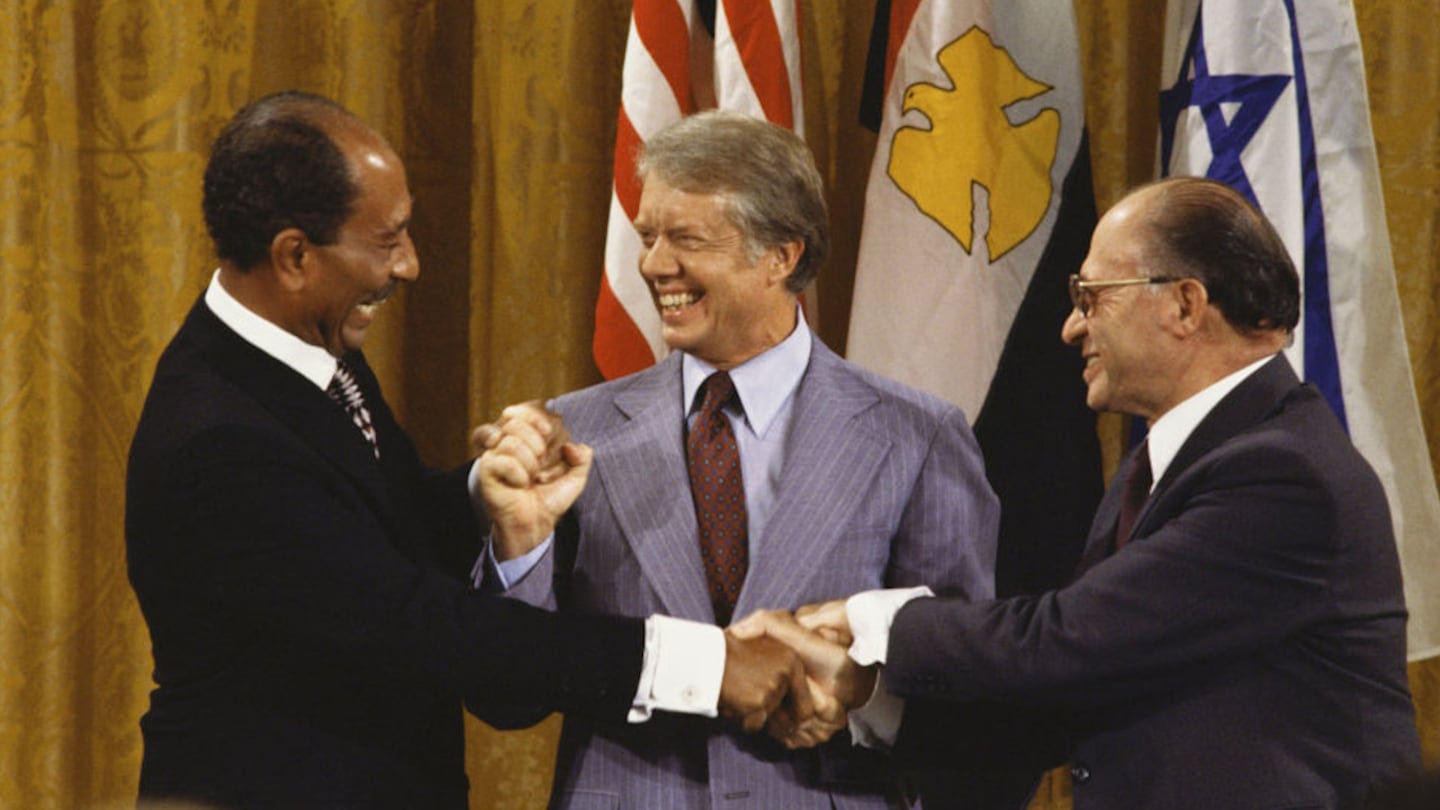Palestine, a small strip of land on the eastern edge of the Mediterranean Sea, has been the focus of conflict between Israelis and Arabs since biblical times.
Saturday’s attack by the Hamas militant group on southern Israel is the latest incident between Arabs and Israelis since modern-day Israel was formed 75 years ago.
The culture, history and identity of Jews in Israel and Arabs in Palestine are linked to the area and the ancient city of Jerusalem, USA Today reported.
Jerusalem has been called “one of the most bitterly contested cities on earth,” according to The Associated Press. The city includes religious sites Jews, Christians and Muslims, the news outlet reported.
Here is a look at major conflicts in the area since Israel became a nation in 1948.
Creation of Israel
On May 14, 1948, David Ben-Gurion, the head of the Jewish Agency, proclaimed the establishment of the State of Israel, according to the U.S. Department of State’s website. The fledgling country was recognized the same day by President Harry S. Truman.
Palestine had been part of the Ottoman Empire, but after World War I the territory was transferred by the League of Nations to Great Britain, one of the victors in the Great War.
According to the Anti-Defamation League website, the League of Nations gave Britain an administrative “mandate” in 1920 through the Treaty of Sevres. The British gained control over Transjordan (now known as Jordan) and Palestine, which includes modern-day Israel, the West Bank and the Gaza Strip.
The British Mandate of Palestine lasted until 1948, according to the ADL. Zionists had demanded self-government for Israel for decades, while Arab factions rejected the Jewish presence and nationalist intent in the area.
The British, meanwhile, opposed the creation of Jewish and Arab states in Palestine, according to the State Department.
War of Independence
The Israelis called the 1948 conflict with Arabs the War of Independence. The Palestinians, meanwhile, called the fight Al Nakba, or “the catastrophe,” according to The New York Times.
War began the day after the Israeli state was created. Arab armies from Lebanon, Syria and Iraq launched attacks, according to the State Department.
Fighting continued until an armistice was reached between Israel and the four Arab nations in February 1949.
Jerusalem was cut in half in the aftermath of the war, USA Today reported. Israel controlled the western part of the city and Jordan controlled the east.
“Sure, God promised it to us, but what does that matter to them?” Ben-Gurion said about Palestinians, according to Benny Morris’ book, “1948: A History of the First Arab-Israeli War.” “There has been anti-Semitism, the Nazis, Hitler, Auschwitz, but was that their fault? They only see one thing: We have come here and stolen their country.”
The Suez Crisis
On July 26, 1956, Egyptian President Gamal Abdel Nasser announced the nationalization of the Suez Canal Company, according to the U.S. Department of State website. The company, a joint British-French enterprise, had owned and operated the Suez Canal since construction began in 1869.
Egypt barred Israeli ships from using the canal, which is a vital link between the Red Sea and the Mediterranean Sea, and the Straits of Tiran, another shipping route, USA Today reported.
Israel invaded Egypt with assistance from Britain and France, according to The Washington Post. The Soviet Union, who are allied with the Egyptians, threatened nuclear retaliation, USA Today reported.
The U.S. pressures Israeli, British and French forces to withdraw, according to the Post. A peace deal and a United Nations ceasefire were reached on Nov. 6, a deal backed by the U.S. and the Soviet Union.
The U.N. employed a peacekeeping force in the area.
The canal remained blocked by sunken ships and did not reopen until 1957, the newspaper reported.
The Six-Day War
War in June 1967 was the result of tensions that had built up since the Suez crisis, which included several border skirmishes between Arabs and Israelis, the BBC reported.
The biggest conflict came along Israel’s northern border with Syria as the two countries clashed over disputed territory, according to the news organization. Israel was also unhappy with Syria’s attempts to divert the River Jordan from the country’s national water grid.
In a show of support for his Syrian allies, President Gamal Abdel Nasser ordered Egyptian forces to advance into the Sinai Peninsula, where they expelled a U.N. peacekeeping force.
On June 5, 1967, Israel attacked Egypt and later Jordan and Syria, capturing the Gaza Strip, the West Bank, East Jerusalem, the Golan Heights and the Sinai Peninsula, according to USA Today.
During those six days, Israel defeated three Arab armies and gained territories that expanded the country to four times its original size, according to the Wilson Center.
The brief war ended with a ceasefire brokered by the U.N., according to History.com.
The Yom Kippur War
Egypt and Syria led a coalition of Arab nations and launched a surprise attack on Israel, The Washington Post reported.
The Oct. 6, 1973, attack began on Yom Kippur -- the holiest day of the Jewish year. It also occurred during the Islamic holy month of Ramadan and is also known as the Ramadan War, according to USA Today.
Arab forces initially gained ground but were repelled and driven back when Israel counterattacked, according to the newspaper. The U.S. and other allies helped supply the Israelis in the war, which lasted until Oct. 25, 1973.
A total of 2,656 Israeli soldiers were killed in the war and 7,251 were injured, according to The Jerusalem Post. There were 294 prisoners of war. Casualties on the Arab side had no exact casualty numbers, Reuters reported. Estimates showed that approximately 15,000 Egyptians were killed and about 3,500 Syrians died during the conflict, according to the news organization.
Israel invades Lebanon
On June 6, 1982 -- 15 years and a day after the Six-Day War began, Israel invaded Lebanon intending to eliminate the Palestine Liberation Organization, according to the United Nations website. After a ceasefire, PLO forces withdrew to neighboring countries. Although there were promises of safety for Palestinian refugees who stayed behind, massacres occurred at the Sabra and Shatila camps.
Camp David accords
President Jimmy Carter brokered a deal for peace between Israeli Prime Minister Menachem Begin and Egyptian President Anwar Sadat on Sept. 17, 1978, the Post reported.
The deal led to Israel’s gradual withdrawal from the Sinai Peninsula, according to USA Today.
Oslo accords
In 1993, the first of the two Oslo accords was signed between Israel and the Palestine Liberation Organization, the Post reported.
A second agreement would be signed in 1995.
The pacts created the Palestinian Authority to oversee most administrative affairs in the West Bank and the Gaza Strip. The PLO, which was formed in 1964, is recognized by Israel and the U.S. as a negotiating partner, according to the newspaper.
The agreement was signed by Israeli Prime Minister Yitzhak Rabin and PLO leader Yasser Arafat, according to USA Today. The deal established a timetable for peace in the Middle East.
.The deal left several issues unresolved, such as Israeli settlements in the West Bank and the status of Jerusalem, the Post reported.
Israel attacks Gaza Strip
In December 2008, Israelis launched three weeks of attacks on the Gaza Strip after Palestinian militants fired rockets into Israel, the Post reported.
More than 1,110 Palestinians and 13 Israelis were killed, according to the newspaper.
The fighting ended on Jan. 18, 2009, USA Today reported.













